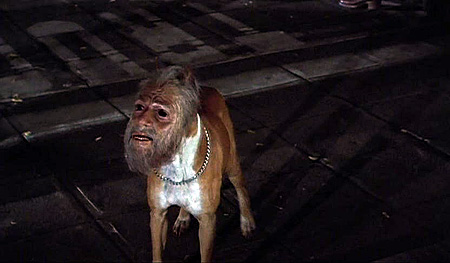I am grateful to Brian Kuan Wood for the title of this essay.
“The Playboy Interview: Marshall McLuhan,” Playboy, March 1969, available at →. I am grateful to Jacob Lillemose for this reference.
Sigmund Freud, The Uncanny, trans. David McLintock (1899; London: Penguin Books, 2003), 150.
Karl Marx and Friedrich Engels, The Communist Manifesto, trans. Samuel Moore (1848; London: Penguin Classics, 1967), 78, 94.
Ibid.
Ibid., 83.
Jacques Derrida, Specters of Marx: the State of the Debt, the Work of Mourning, and the New International, trans. Peggy Kamuf (1993; New York: Routledge, 2006), 57.
I am thinking of Mike Kelley’s The Uncanny (1993; Cologne: Walther König 2004), Christoph Grunenberg’s Gothic: Transmutations of Horror in Late-Twentieth-Century Art (Boston: Institute of Contemporary Art, 1997), and Paul Schimmel’s Helter Skelter: L.A. Art in the 1990s, ed. Catherine Gudis (Los Angeles: Museum of Contemporary Art, 1992), which had the subtitle Art of the Living Dead).
David Deitcher: “Social Aesthetics,” in Democracy: A Project by Group Material, ed. Brian Wallis (New York: DIA Art Foundation, 1990), 37. (Deitcher erroneously states that Dawn of the Dead appeared in 1979; the correct year is 1978. I have corrected this in the quotation.)
Franco Moretti, “Dialectic of Fear,” in Signs Taken for Wonders: On the Sociology of Literary Forms, trans. Susan Fischer, David Forgacs, and David Miller (London: Verso, 1983), 84.
Steven Shaviro, The Cinematic Body (1993; Minneapolis: University of Minnesota Press, 2006), 91.
Holmes, “The Affectivist Manifesto: Artistic Critique in the 21st Century,” in Escape the Overcode: Activist Art in the Control Society (Eindhoven: Van Abbemuseum; Zagreb: What, How & for Whom, 2009), 14.
See Julia Kristeva, Powers of Horror: An Essay on Abjection, trans. Leon S. Roudiez (New York: Columbia University Press, 1982).
Hal Foster, The Return of the Real (Cambridge, MA: The MIT Press, 1996), 156.
Jean and John L. Comaroff, “Alien-Nation: Zombies, Immigrants and Millennial Capitalism,” South Atlantic Quarterly 101, no. 4 (Fall 2002): 779–805. I am grateful to Kodwo Eshun for this reference. The allegorical impulse behind bringing the zombie back to the Marxian concept of alienation derives from the dynamics of the zombie’s ruinous (lack of) existence. Thus George Romero’s famous trilogy is a sequence of allegorical variation: a critique of racist America (Night), a critique of consumerism (Dawn), and a critique with feminist overtones (Day).
See Gilles Deleuze and Félix Guattari: Anti-Oedipus: Capitalism and Schizophrenia, trans. Robert Hurley, Mark Seem, and Helen R. Lane (1972; Minneapolis: University of Minnesota Press, 1983).
See also my introduction in the exhibition guide A History of Irritated Material (London: Raven Row, 2010).
Karl Marx, “Estranged Labour,” in Economic and Philosophical Manuscripts of 1844, available at →.
Franco “Bifo” Berardi, The Soul at Work: From Alienation to Autonomy, trans. Francesca Cadel and Mecchia Giuseppina (New York: Semiotext(e), 2009), 23.
Deleuze and Guattari: Anti-Oedipus: Capitalism and Schizophrenia, 335.
Wade Davis, The Serpent and the Rainbow (New York: Simon & Schuster, 1985), 80.
Ibid., 139.
See also my article “Brains” in Muhtelif no. 4 (2008).
Max Brooks, World War Z: An Oral History of the Zombie War (New York: Gerald and Duckworth, 2007), 96.
See Berardi, The Soul at Work, 21.
In the Spanish translation the body snatchers are ultracuerpos: ultrabodies, as if particularly well-adapted mutations.
See also my Kunst er Norm (Aarhus: Jutland Art Academy, 2008).
James H. Gilmore and B. Joseph Pine II, The Experience Economy: Work is Theatre and Every Business a Stage (Boston: Harvard Business School Press, 1999), 16.
Ibid., 175.
See the Aarhus University, Faculty of Humanities website.
Diedrich Diederichsen, Eigenblutdoping: Selbstverwertung, Künstlerromantik, Partizipation (Cologne: Kiepenheuer & Witsch, 2008).
Žižek discusses the zombie in terms of suffering. Of Romero’s Night of the Living Dead, he writes: “The ‘undead’ are not portrayed as embodiments of pure evil, of a simple drive to kill or revenge, but as sufferers, pursuing their victims with an awkward persistence, colored by a kind of infinite sadness.” The dead make their melancholic return because they haven’t been properly buried—just like ghosts, zombies return “as collectors of some unpaid symbolic debt.” Žižek points out that “the return of the dead signifies that they cannot find their proper place in the text of tradition,” an insight that we can use for our own sociological ends. Similarly, the experience commodity cannot find its place in the text of tradition and culture, inasmuch as this is what the experience economy is undoing. Slavoj Žižek, Looking Awry: An Introduction to Jacques Lacan through Popular Culture (Cambridge, MA: The MIT Press, 1992), 22–23.
Shaviro, The Cinematic Body, 84.
Quoted from Gilles Deleuze and Félix Guattari, Qu’est-ce que la philosophie (Paris: Éditions de Minuit, 1991), 70.
Zombies of Immaterial Labor was originally presented in the Masquerade lecture series, organized by the curatorial platform If I Can’t Dance I Don’t Want To Be Part Of Your Revolution, at the Piet Zwart Institute in Rotterdam, January 25, 2010.
